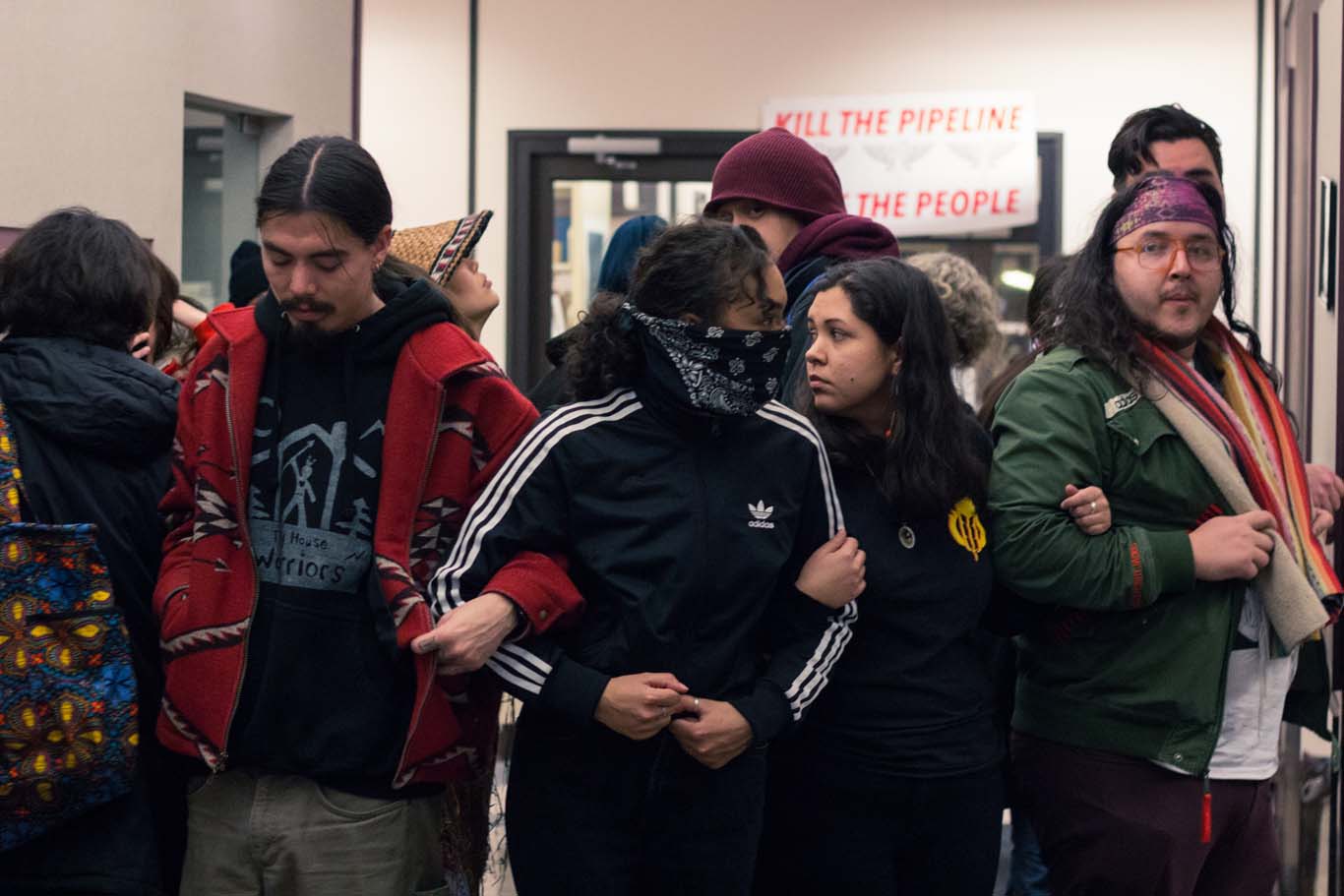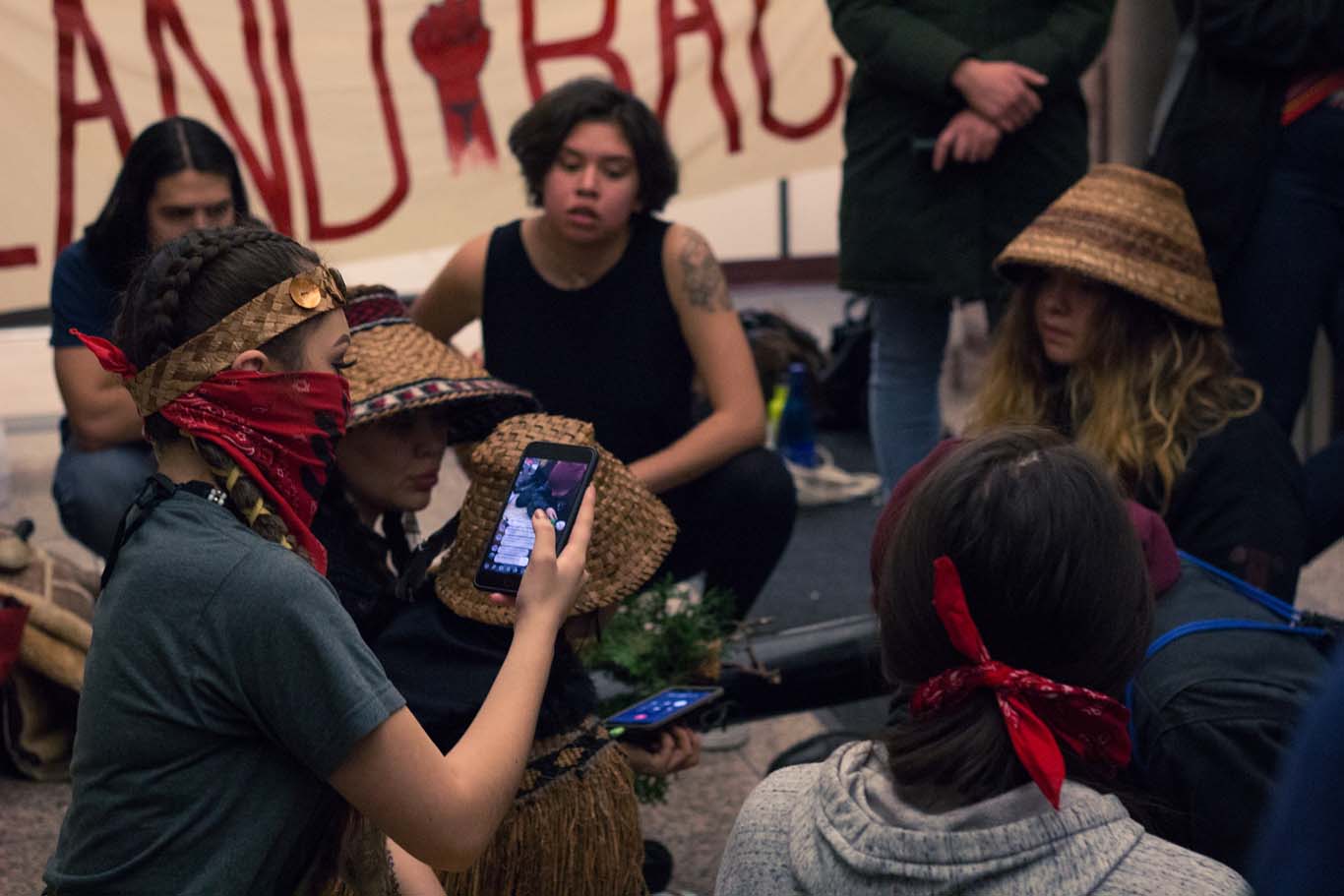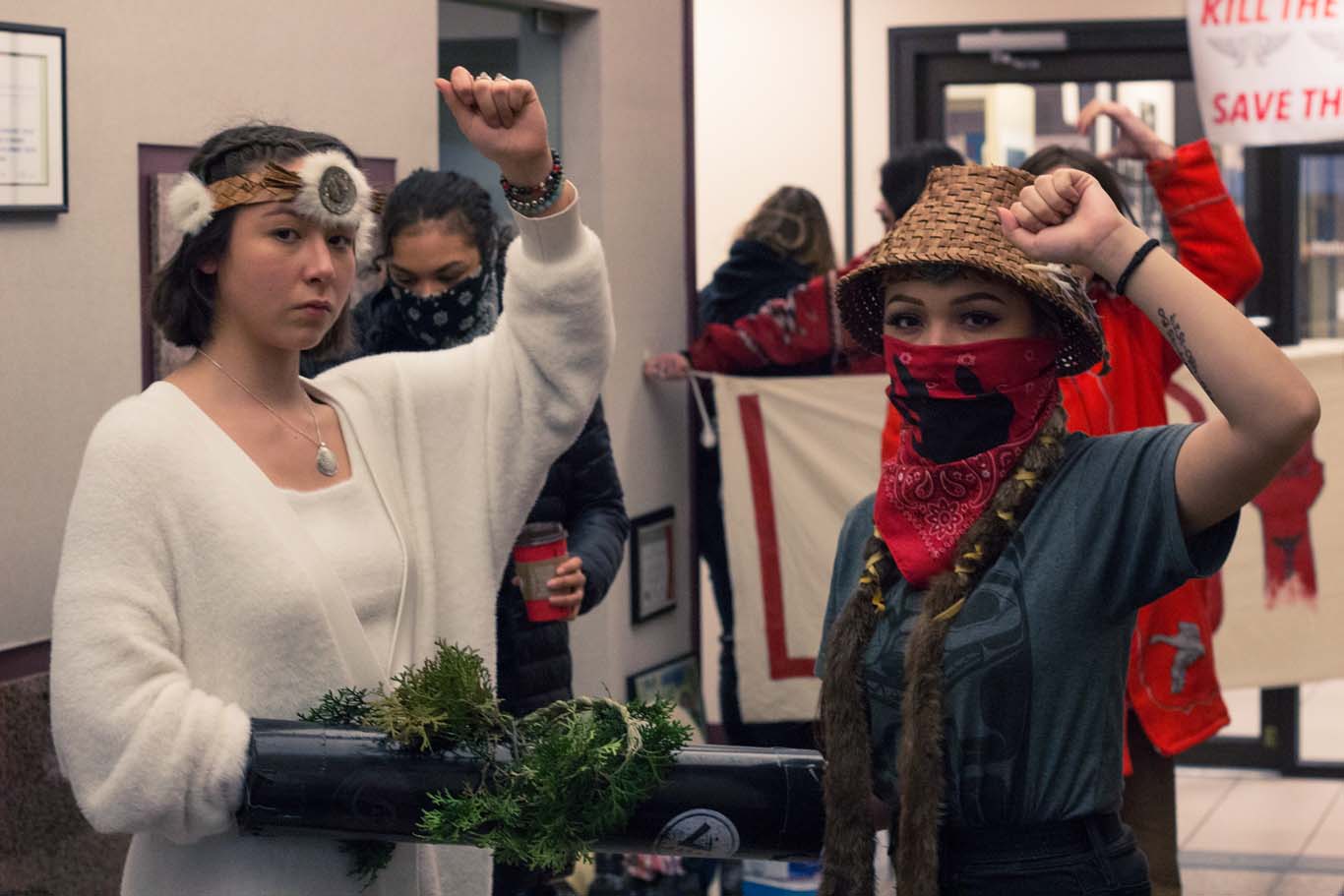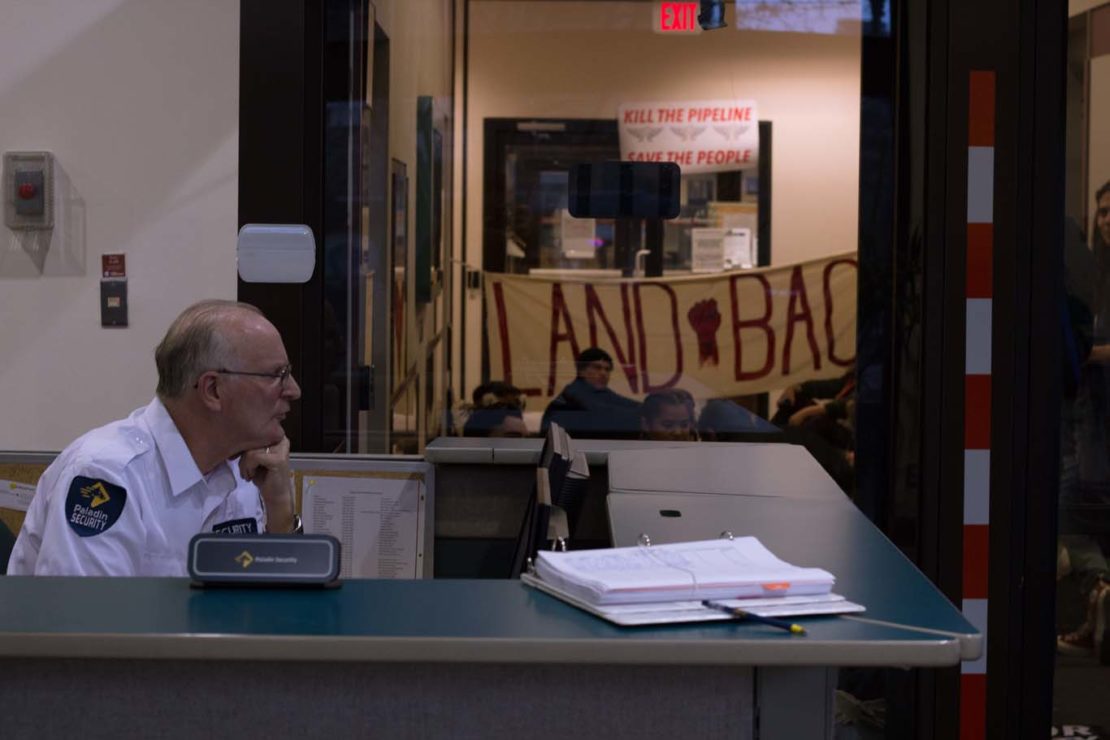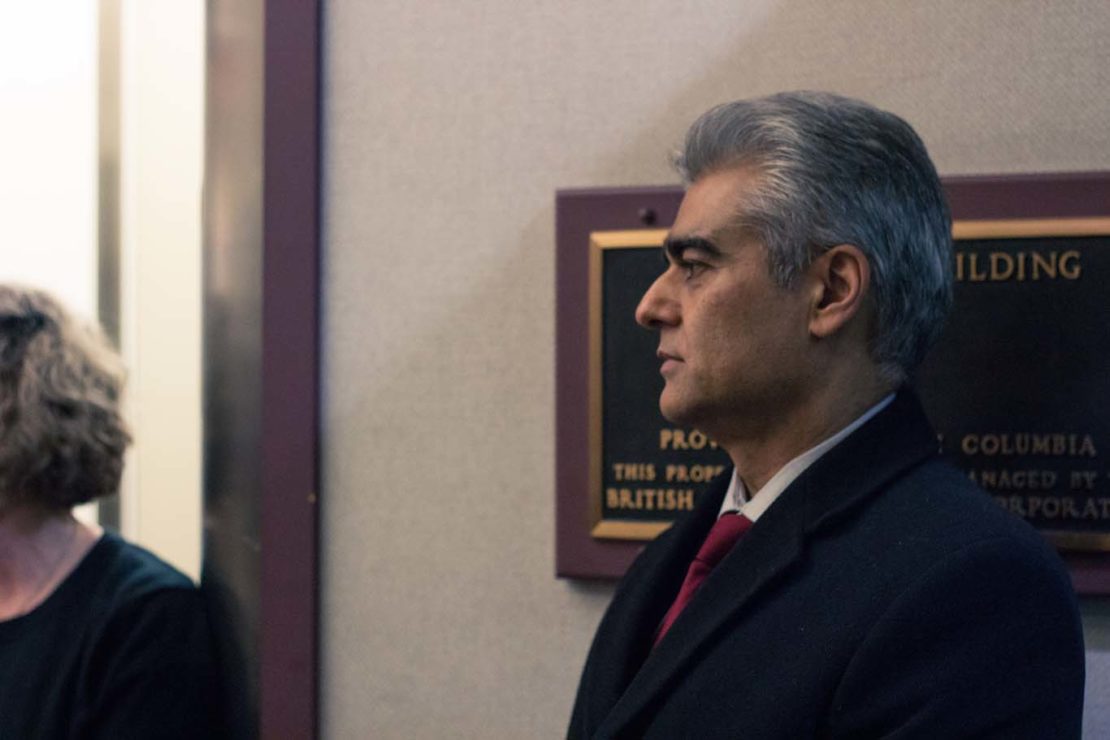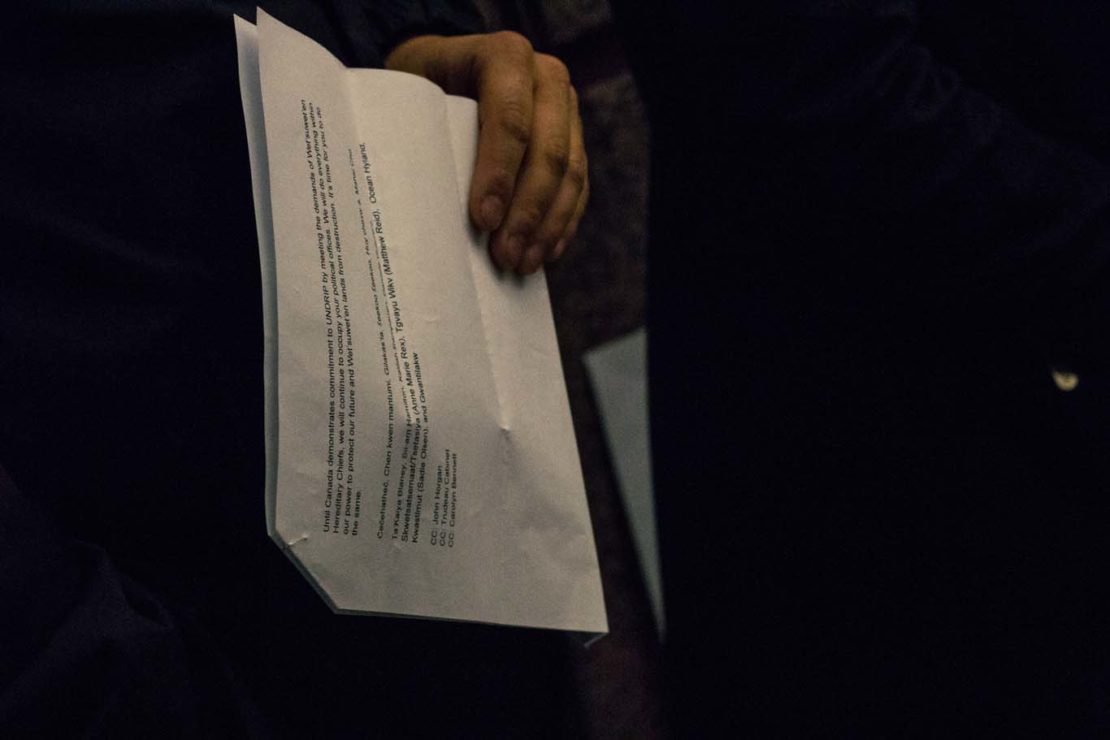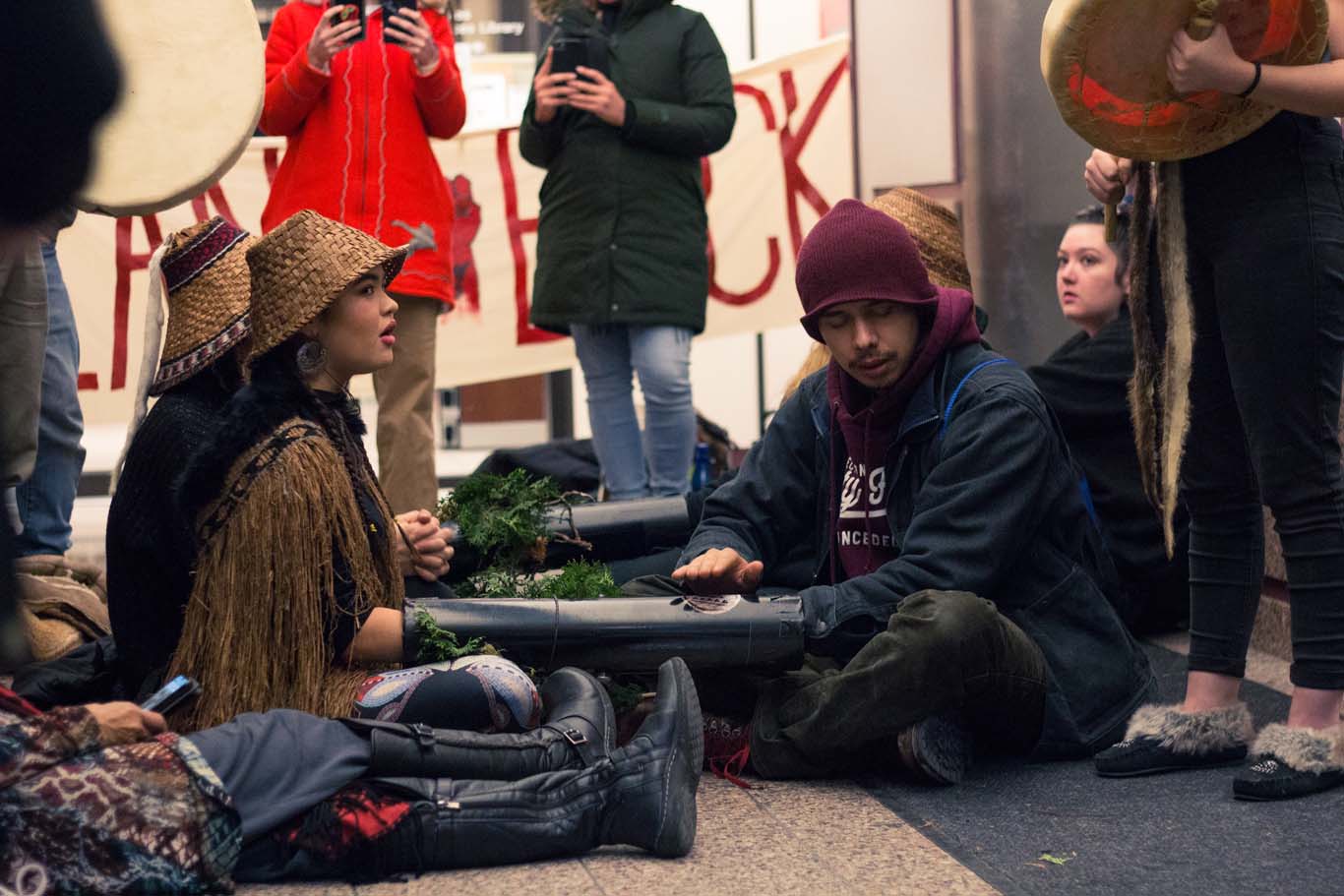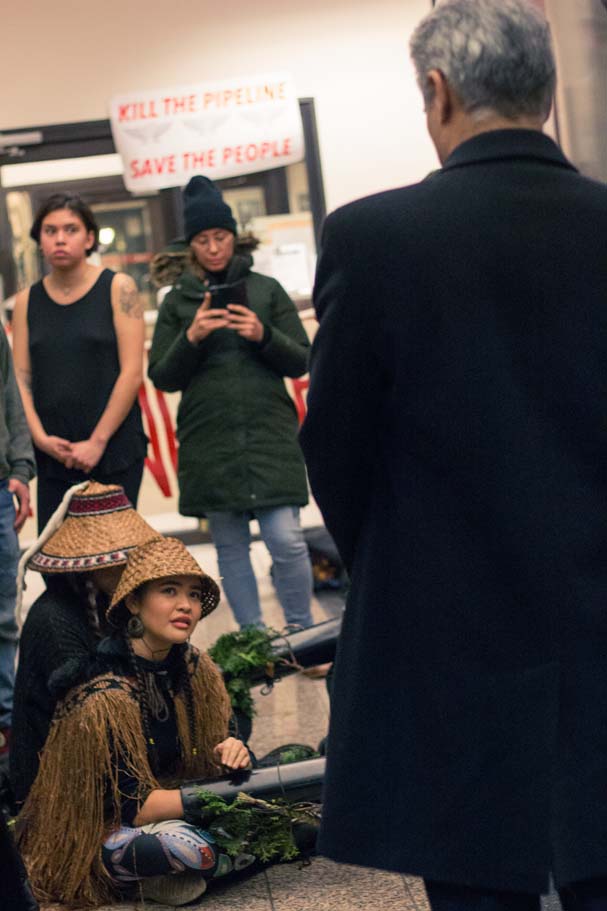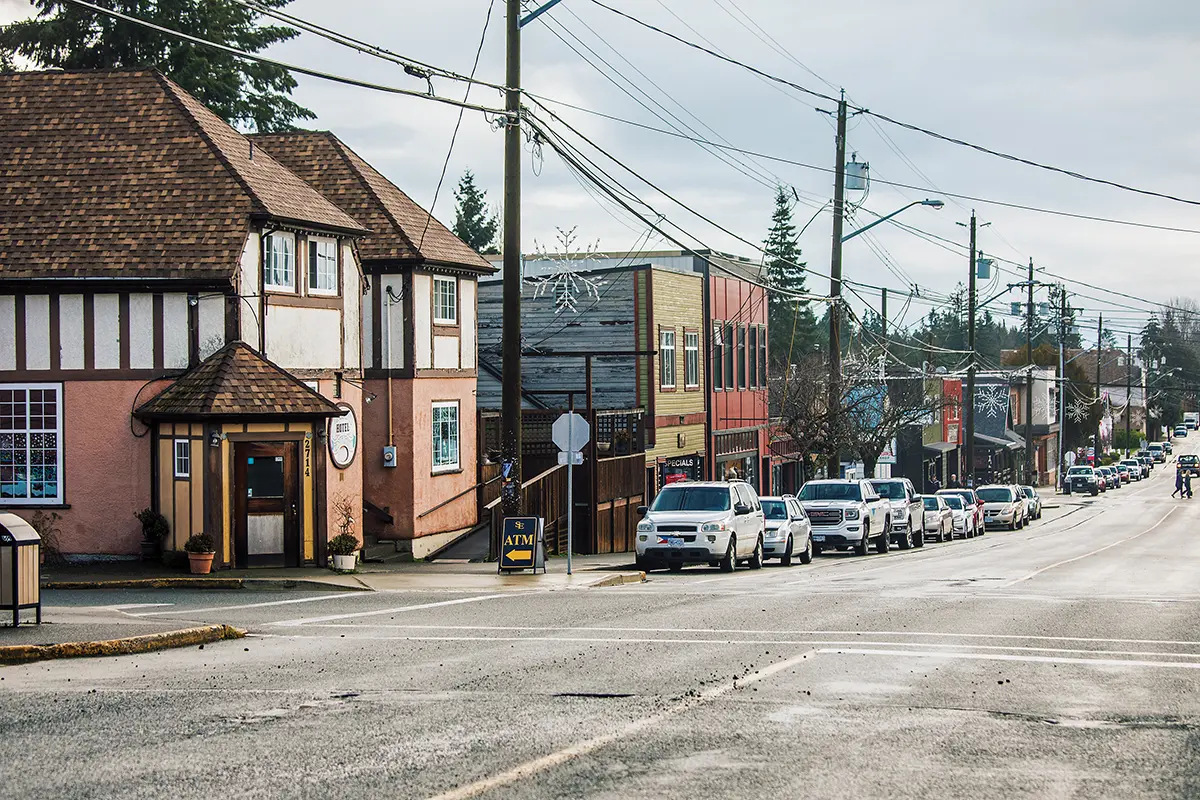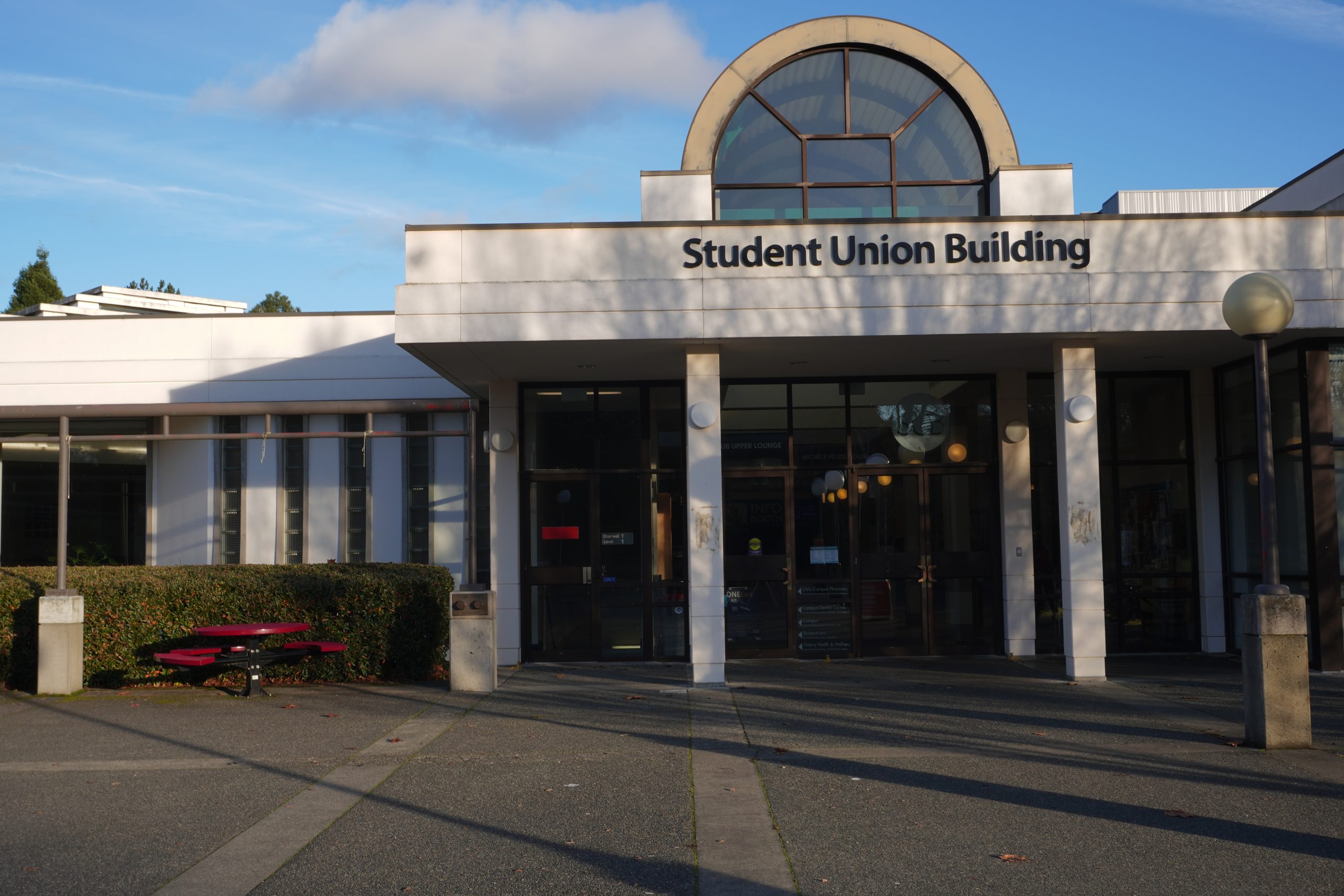Protesters bound themselves together with lockboxes inside Jack Davis Building
Young Indigenous activists began occupying the downtown Victoria offices of the B.C. Ministry of Energy, Mines, and Petroleum in solidarity with the Wet’suwet’en peoples against the Coastal GasLink pipeline on January 21.
Intending to remain until their demands are met — barely a day after another protest blockaded the B.C. Ferries terminal at Swartz Bay — the group occupied the building’s lobby for over 18 hours, until the arrest of 12 protesters by the Victoria Police Department.
The occupation began around 11 a.m. by the elevators in the lobby of the Jack Davis Building, where the Ministry’s offices are located.
“[We just] grabbed open that door and went through,” said Aya Clappis, who is from Huu-ay-aht First Nation of the Nuu-chah-nulth Nation and Firekeeper of the UVic Native Students Union, when asked about how the group gained access to the building despite security presence.
The protesters’ demands are in line with those of the Wet’suwet’en hereditary chiefs: they seek the withdrawal of Coastal GasLink and the RCMP from Wet’suwet’en territory, and for the Ministry to request B.C. Premier John Horgan meet with the Wet’suwet’en chiefs.
In response to their demands, the group alleged that they received a message from the Ministry that had “copy-and-paste” resemblance to other letters that the Ministry had given other groups standing in solidarity with Wet’suwet’en.
“It’s not an adequate response,” says Ta’Kaiya Blaney of Tla’amin First Nation. “We are going to stay here until our demands are genuinely met.”
Blaney, a notable activist and artist, travelled from Vancouver with a delegation of young Indigenous activists to participate in the protest.
Additional security and police began arriving shortly after noon. The protesters stayed in the elevator hallway, while supporters and building employees — including some of the Assistant Deputy Ministers who worked in the offices above — mostly looked on from the main lobby area.
“Doing what we are doing now with this blockade puts us at risk of arrest,” says Blaney. “As an Indigenous woman, I do not feel safe around RCMP, yet we are at the forefront of this – because we understand the risks attached.”
Blaney was later arrested in the early hours of Wednesday morning, reportedly one of the last to be forcibly removed from the building.
They came prepared. Some carried greenery-decorated PVC pipe lockboxes, which can be used to slow down police removal action by physically locking people together. On-site observers and legal assistance were also arranged in advance.
30 minutes before the building closed for the day, Assistant Deputy Minister for the B.C. Ministry of Citizens’ Services Sunny Dhaliwal entered the elevator bay to speak with the young Indigenous activists.
Dhaliwal was invited into a prayer circle and attempted to negotiate with those inside. After 10 minutes, Dhaliwal abruptly left the conversation and the hallway when a member of the group reiterated that they would not leave until their demands were met.
Saul Brown is a UVic Law student from Heiltsuk and Nuu-chah-nulth nations, and attended this action as an observer and supporter.
“I’m here supporting the Indigenous youth that have put their liberties and freedoms on the line to uphold Wet’suwet’en law and to hold the provincial government accountable to meet their international obligations,” he said.
“[I’m also here to see that] the protectors of Indigenous law are not abused or treated with any malicious intent, especially as they do this work that can be seen as illegal under one legal system, but is literally affirming and upholding another legal system which is Indigenous law.”
The protesters hailed from a multitude of backgrounds. Nuu-chah-nulth, Tla’amin, Stó:lō, Namgis, Heiltsuk, Lil’wat, Xwlemi, Qayqayt, Lue Chogh Tue, Shishalh and Sḵwx̱wú7mesh Nations were all represented at the scene.
“I’m not Wet’suwet’en. Most of us aren’t,” said Skye Lacroix of Vuntut Gwitchin and Inuvialuit. However, she said that it was important to show solidarity with each other, as “[they] all go through similar struggles.”
The government has not officially responded at this time to the young Indigenous activists from two officers earlier that evening to over 30 armed police officers, ultimately resulting in the arrest of a dozen protesters.
“Whatever that [response] might look like, we are preparing ourselves to stand strong,” Blaney said.



